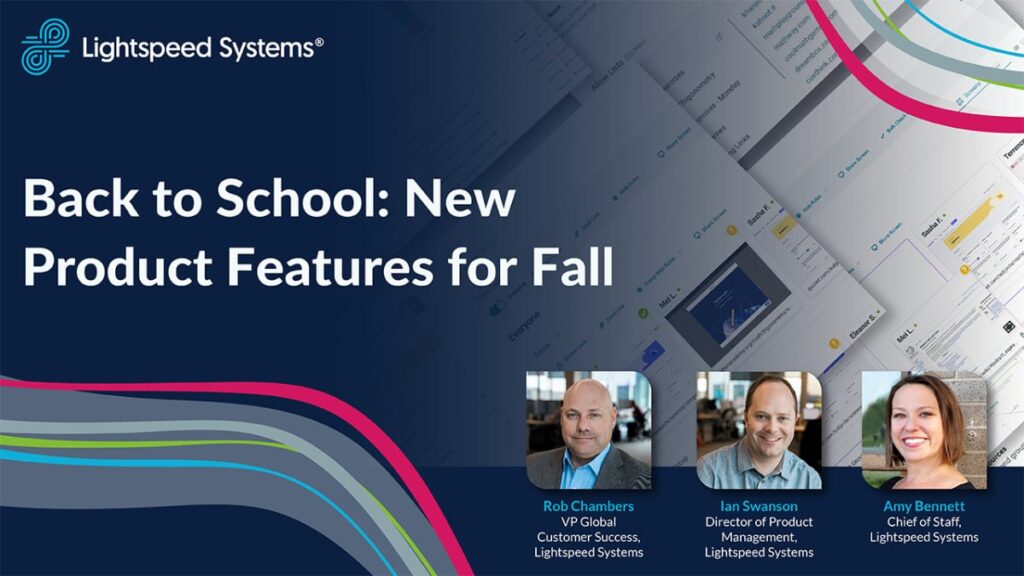The Challenge: Remote Chromebook Content Filtering
Kenowa Hills School District runs a 1:1 technology program. While Pre-K through 1st grade students use iPads, and 2nd through 5th grade students use Chromebooks at school only, middle and high school students utilize their Chromebooks in school and at home.
When the Kenowa Hills School District implemented their 1:1 student device program, expanding online safety and compliance beyond their brick-and-mortar schools was top priority. Operating on a hardware- based web filter meant their students were only protected while on school grounds and taking school-issued devices off campus left students vulnerable and unprotected from harmful online content.
“The problem we were solving was sending devices out of network and remaining compliant with [CIPA] laws regarding our devices and filtering,” David Tchozewski, Director of Information Technology, reveals.
The proliferation of in-school online instruction also meant teachers were looking at the back of a lot of student devices, without visibility into online activity.
“There had been ongoing conversations in our district about screen monitoring software for years. But when we moved to hybrid learning, we saw a greater need for being able to see student screens when teachers were not standing behind students.” Tchozewski states.
There had been ongoing conversations in our district about screen monitoring software for years. But when we moved to hybrid learning, we saw a greater need for being able to see student screens when teachers were not standing behind students.
David Tchozewski, Director of Information Technology, Kenowa Hills (MI) School District
The Solution: Implementing a Cloud-Based, CIPA-Compliant Web Filter
To meet the challenge of e-safety compliance and ensuring students were protected at home, Kenowa Hills subscribes to Lightspeed Filter (formerly Relay). Lightspeed Filter is the best-in-class K—12 content filtering software powered by the most comprehensive database of online content, web indexing, patented agents and advanced AI.
Lightspeed Filter agents put the power of a filter inside each device. With cloud-based, device-level protection Kenowa Hills students are safeguarded from dangerous and inappropriate online content anywhere their learning takes place—on or off the district network.
Kenowa Hills was able to leverage government funding to add Lightspeed Classroom Management to their tool kit. Now, rather than looking at the back of student devices, teachers can view what students are looking at. Kenowa Hills School District teachers can keep their students logged in, participating, and focused. Teachers can also take control of their virtual classroom by providing quick redirections, close tabs, push out educational URLs, and send private messages to students who are off task for more productive interventions.
With live training sessions and self-paced course offerings, Wes Ackerman, Network Systems Admin, knew he could rely on Lightspeed Systems to ensure successful implementation. “Implementing Lightspeed Filter and Classroom Management was easy. I did it myself and had no problems.”
The Results: Discovering Previously Unknown Online Activity Behaviors
With the use of the student search history feature within Lightspeed Filter, Kenowa Hills School District uncovered several incidents of device misuse. “From an administrative standpoint, the dashboard is easy
to access, user friendly, intuitive, and easy to follow. When we can look back and come up with the details of: this website at this time—it’s powerful data to have especially when you’re having to discuss the issue with a student and/or parents,” Tchozewski explains.
Wes Ackerman was most excited about the Online Activity report as it provided data regarding student device and app usage. This report can be sent as a link, with the option of an expiration timestamp. He credits this feature as being one of the deciding factors for the district subscribing to Lightspeed Filter.
Kenowa Hills teachers were able to leverage the screen viewing feature in Lightspeed Classroom. Teachers now had the power to identify distracted students and see exactly what they were viewing. Rather than participating in class, some students were instead off task. Lightspeed Filter also helps to bring more collaboration between IT staff and teachers. IT staff leveraged controls within Lightspeed Filter to block inappropriate websites and videos. In return, teachers became more proactive with their lesson planning prior to class time to ensure educational URLs were approved and CIPA compliant.
“Lightspeed Systems has been an excellent implementation for our district. There are so few serious incidents that we have to deal with because the system is taking care of it, magically in the background, and keeping kids from getting to bad places,” Tchozewski praises.
From an administrative standpoint, the dashboard is easy to access, user friendly, intuitive, and easy to follow. When we can look back and come up with the details of: this website at this time--it's powerful data to have especially when you're having to discuss the issue with a student and/or parents.
David Tchozewski, Director of Information Technology, Kenowa Hills (MI) School District

Info
Location:
Grand Rapids, MI
Customer Since:
2017
Students:
3,100
Age range:
Pre-K-12
Devices Used:
Chromebooks, PCs, Macs, iPad
Solutions:
Share On
About Lightspeed Systems
Lightspeed Systems, headquartered in Austin, Texas, is a leading online safety and effectiveness platform for K–12 schools. A proven partner for student safety and engagement, Lightspeed uses advanced AI to view and analyze student activity across the web. Lightspeed serves over 20 million students in 38 countries and 28,000 schools globally.












